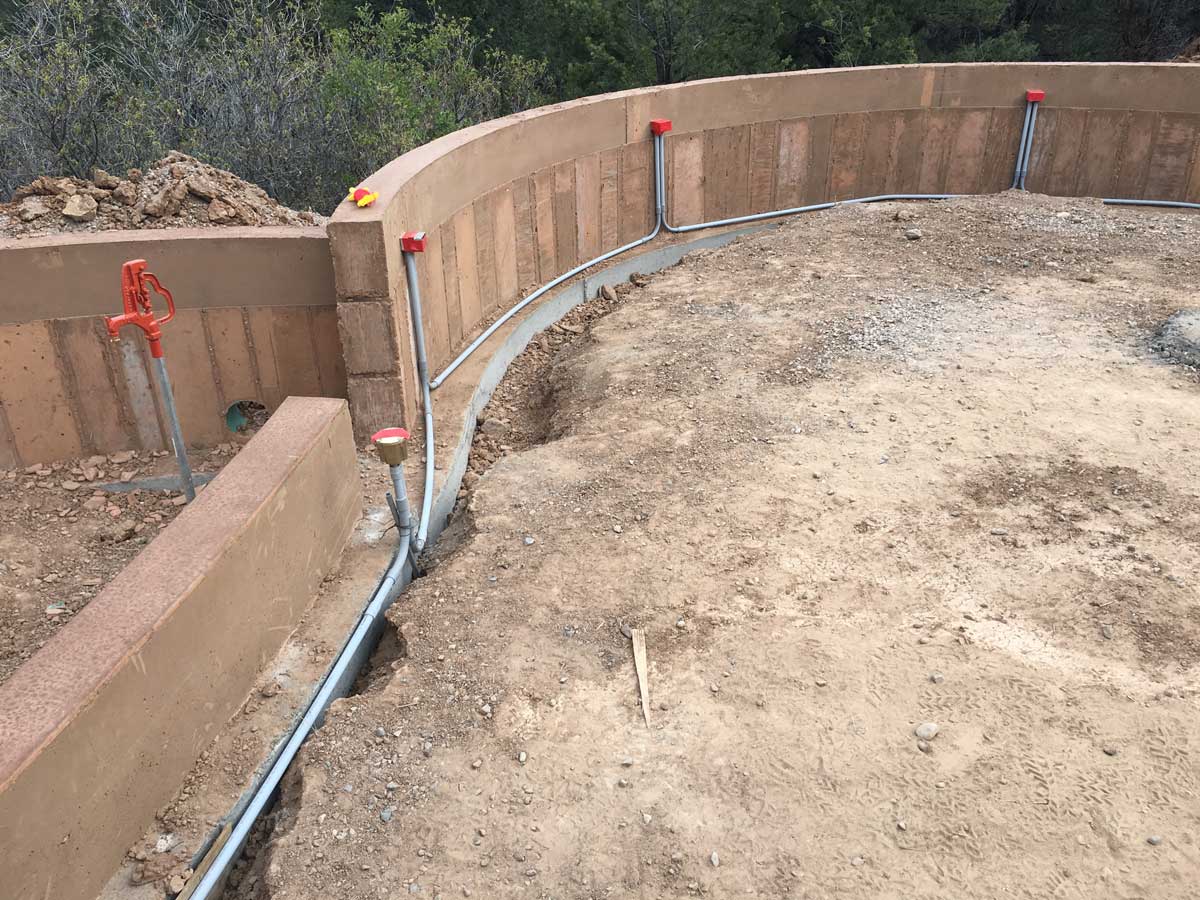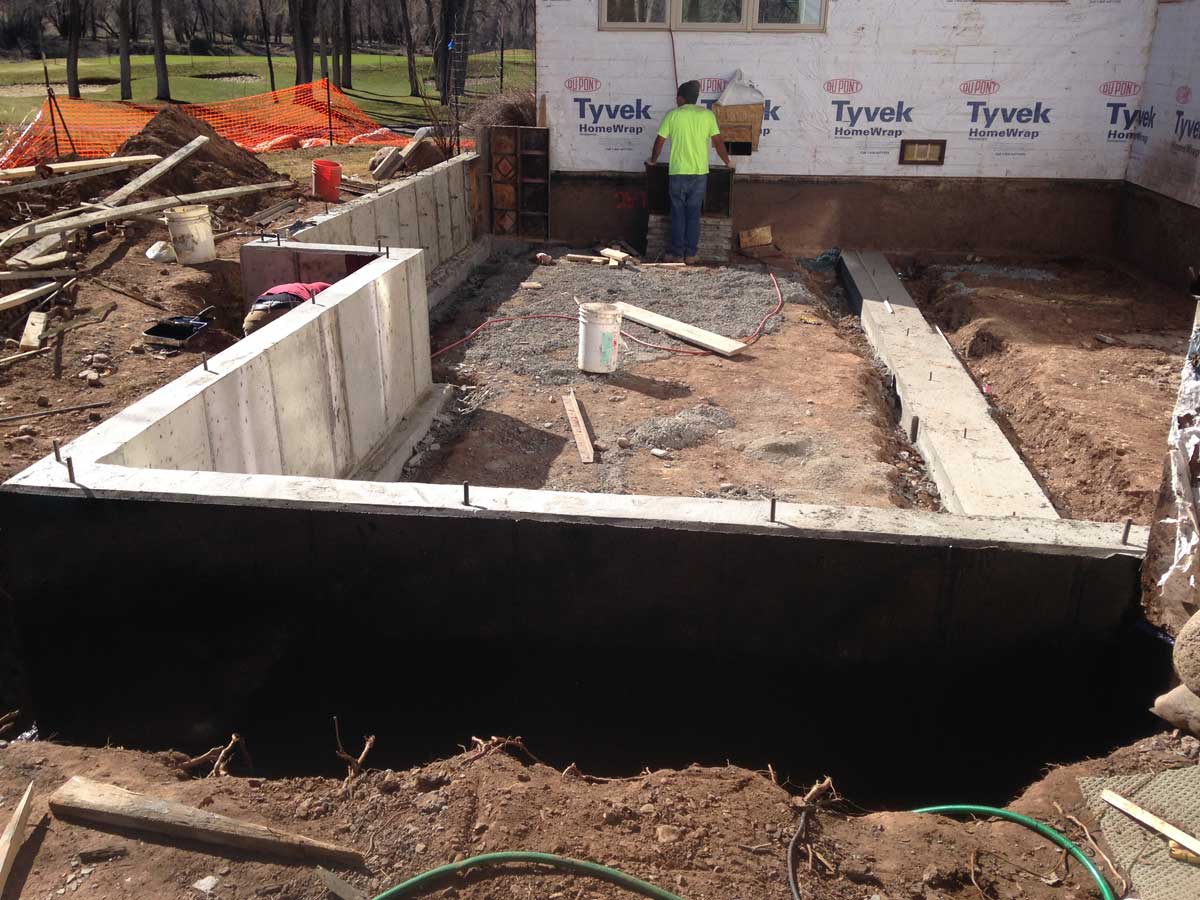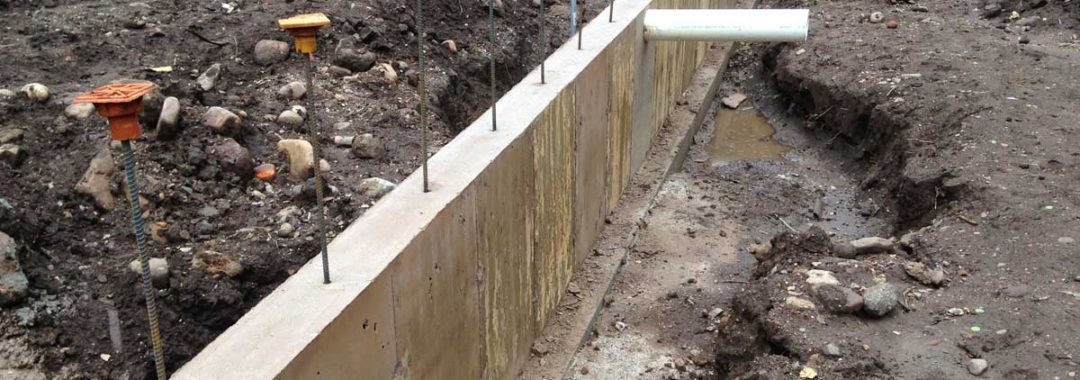Design – A good building foundation starts with good design, but who designs the foundation? It’s really a team of individuals who determine the design and construction details for a given project.
Soils Engineer – Working with a geotechnical engineer is a good idea anytime site soils present special concerns such as highly expansive soils (clay for example), steep slopes (above 30%), or sub-surface moisture. While soils engineering is considered optional for some local residential projects utilizing standardized construction details in known soil conditions, it is, in fact, required by local building code for many areas and applications, such as areas with known soil problems and commercial projects. The first step is usually drilling a number of core samples in the desired construction area to determine the makeup of soils down the area where the drill is refused. The soils report generated by the geotechnical engineer can then be used by the other team members to help design the foundation, roads, and septic systems.
Did I mention that your building envelope could contain multiple different soil conditions requiring different construction methods within the same project? We’ve worked on projects where two identical homes adjacent to each other have required different geotechnical and foundation designs.

Structural Engineer – The licensed structural engineer will take soil load bearing characteristics and other information gathered from the soils engineer such as swell potential into account when designing the foundation. Working with a preliminary design from the designer or architect, the engineer will compute the necessary loads and supply stamped drawings for building permit submittal.
Designer/Architect – Whether you’re working with a designer or a licensed architect, it will be their job to combine the information from the Soils Engineer and the Structural Engineer and implement those design criteria and specifications into the building design. It sounds easy, but if you’ve ever been in a building where structural members were obviously an afterthought, you will understand the importance of integrating structural elements within the design from the beginning.
General Contractor – Your general contractor is generally the person who helps facilitate the flow of design information among all the parties, including the project owner or manager. In addition to this important task, your general contractor can help to integrate other concerns such as site and equipment limitations, as well as budget concerns, sequencing, and scheduling into the final design. Ultimately, your contractor will be responsible for coordinating a successful design and monitoring construction conditions and quality.
Earthwork – It’s really important to work with a builder or subcontractor well-versed in proper construction techniques for your area and soil type(s). Your excavation contractor should have the equipment and sufficient manpower to keep your project moving. Weather and soil conditions must be continually monitored. While it’s possible to complete excavation work year-round in many localities, certain practices may need to be put into place to deal with inclement weather or changing soil conditions such as ground-heating, blanketing, and de-watering. Work with someone willing to use and follow the information provided in the soils report. As a further measure of quality control, on-site materials and compaction testing can be done when deemed necessary.

Concrete – Once concrete is placed properly, you should be able to expect decades or more of reasonable use. When you consider its initial costs to install and the difficulty involved in the repair or replacement of work that has been done poorly, it’s absolutely critical that the job be done right the first time. If you’re trying to pour a budget foundation for a garden shed or agricultural building, go right ahead. But, if you’re building your dream home or expanding your business, try and avoid the low-bid on this critical phase of construction.
If you’re finding that your construction budget is limited, consider cuts to interior finishes and other items that can be upgraded later, rather than cutting corners on geotechnical engineering, testing, or foundation design. It can be difficult and expensive to make repairs down the road after the home is built and driveways and landscaping is in place. Again, working with a qualified general contractor or subcontractor is critical to getting a product that is square, plumb, and level. The work done at this phase will affect how the entire structure is framed and finished as well as the structure’s overall service life.
Fact: Did you know that concrete is the most widely used building material used in the world? Nearly 10 billion tons of concrete is produced each year and it is the world’s second largest commodity, after water.

